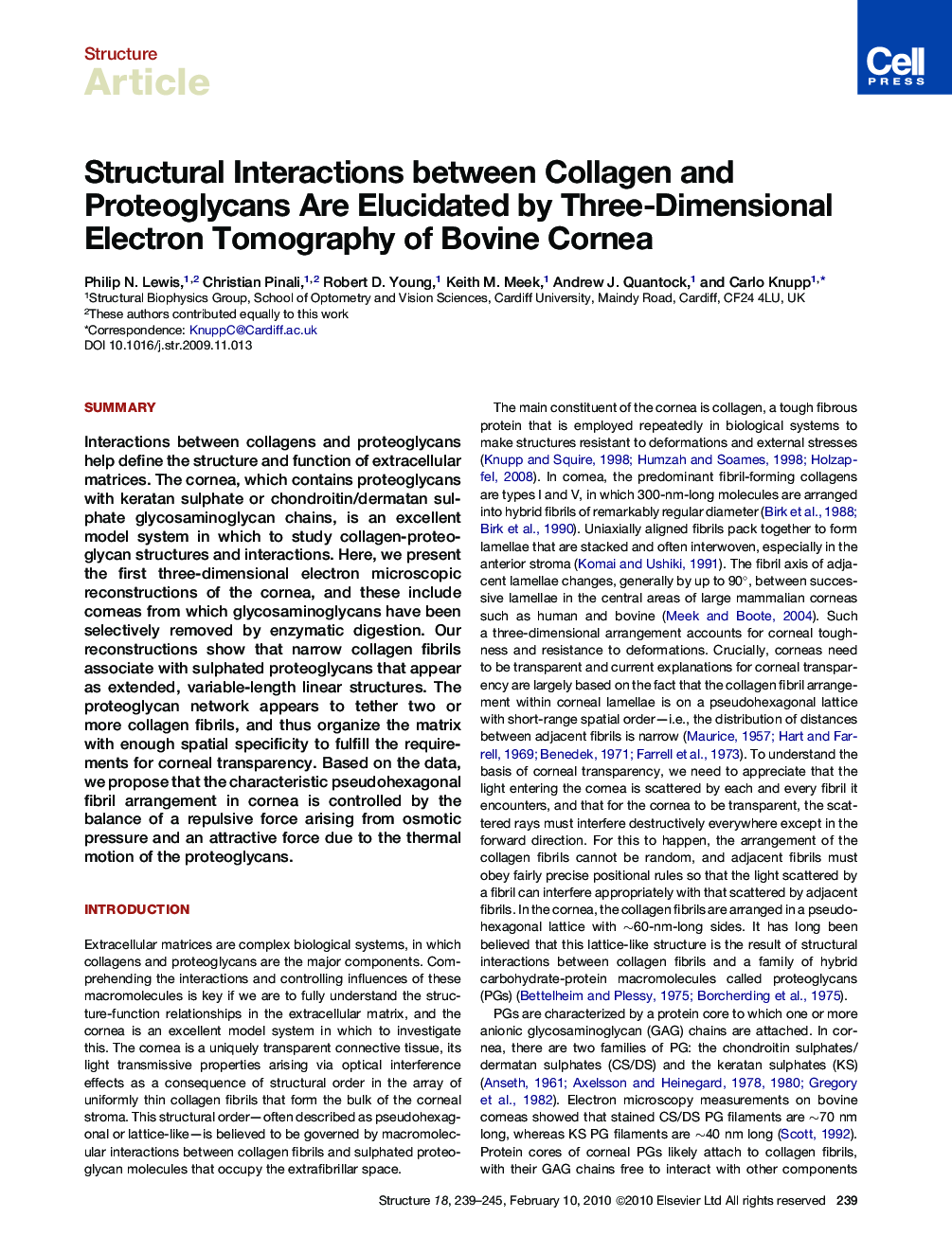| Article ID | Journal | Published Year | Pages | File Type |
|---|---|---|---|---|
| 2030557 | Structure | 2010 | 7 Pages |
SummaryInteractions between collagens and proteoglycans help define the structure and function of extracellular matrices. The cornea, which contains proteoglycans with keratan sulphate or chondroitin/dermatan sulphate glycosaminoglycan chains, is an excellent model system in which to study collagen-proteoglycan structures and interactions. Here, we present the first three-dimensional electron microscopic reconstructions of the cornea, and these include corneas from which glycosaminoglycans have been selectively removed by enzymatic digestion. Our reconstructions show that narrow collagen fibrils associate with sulphated proteoglycans that appear as extended, variable-length linear structures. The proteoglycan network appears to tether two or more collagen fibrils, and thus organize the matrix with enough spatial specificity to fulfill the requirements for corneal transparency. Based on the data, we propose that the characteristic pseudohexagonal fibril arrangement in cornea is controlled by the balance of a repulsive force arising from osmotic pressure and an attractive force due to the thermal motion of the proteoglycans.
► Electron tomography shows corneal matrix structure in 3D ► Collagen-proteoglycan interactions are more complex than previously believed ► Proteoglycans determine collagen interfibrillar spacing ► Proteoglycans likely co-associate in an antiparallel manner
